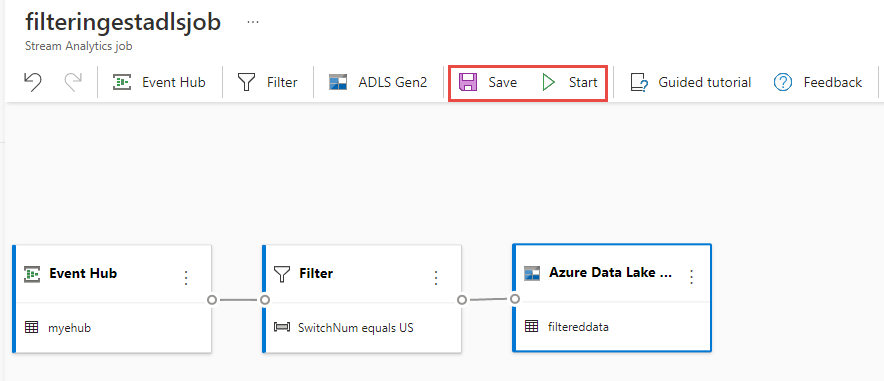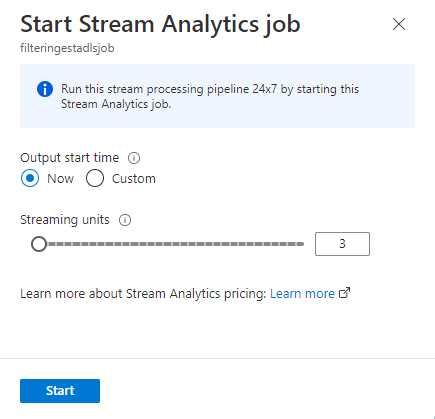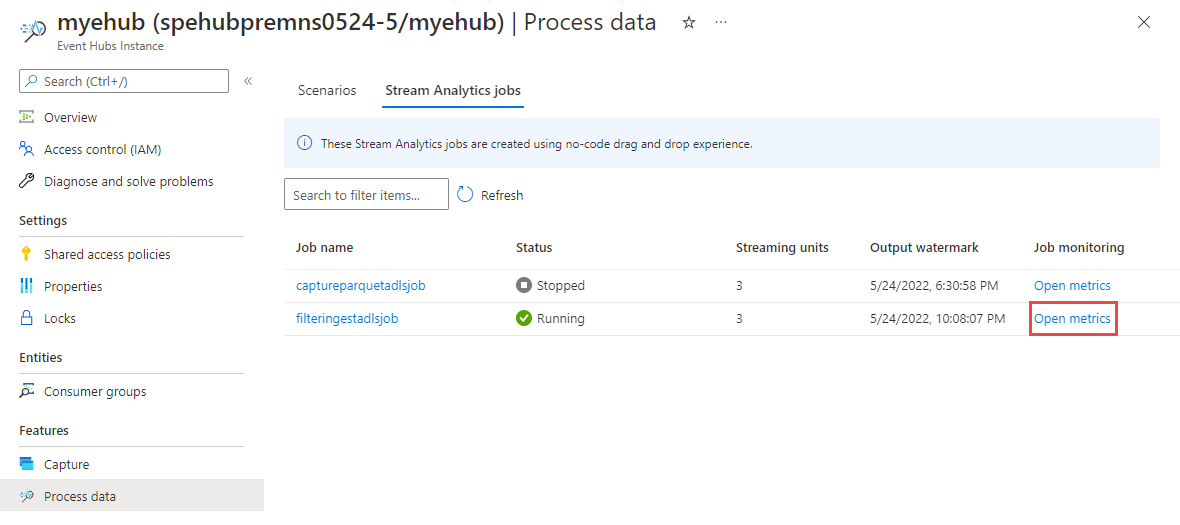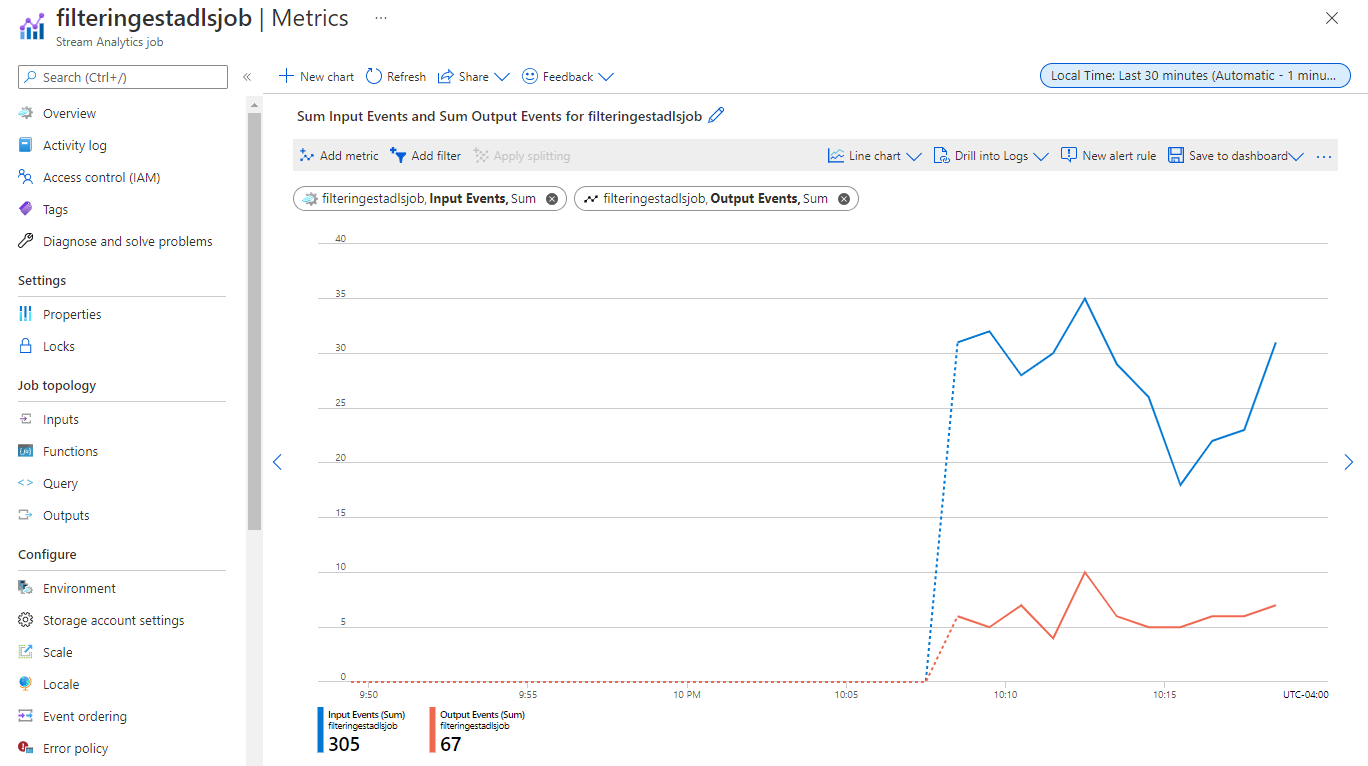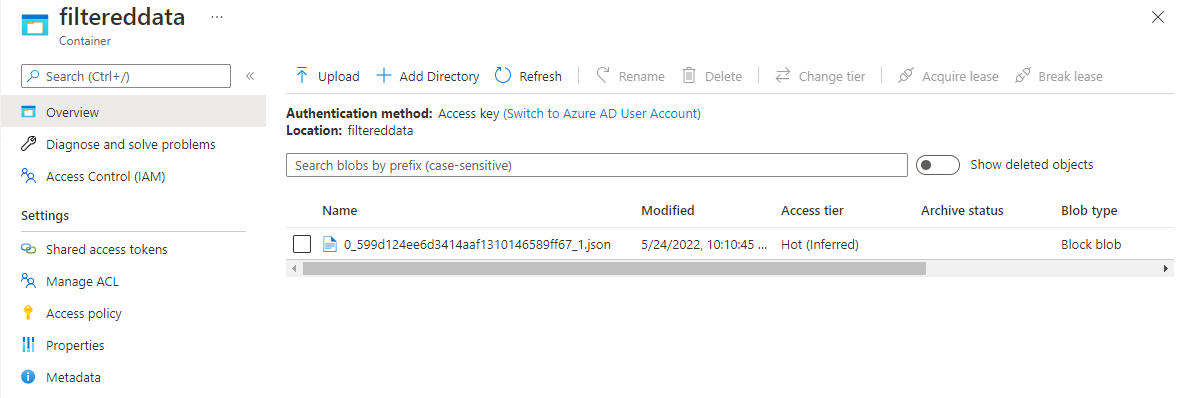Filter and ingest to Azure Data Lake Storage Gen2 using the Stream Analytics no code editor
This article describes how you can use the no code editor to easily create a Stream Analytics job. It continuously reads from your Event Hubs, filters the incoming data, and then writes the results continuously to Azure Data Lake Storage Gen2.
Prerequisites
- Your Azure Event Hubs resources must be publicly accessible and not be behind a firewall or secured in an Azure Virtual Network
- The data in your Event Hubs must be serialized in either JSON, CSV, or Avro format.
Develop a Stream Analytics job to filter and ingest real time data
In the Azure portal, locate and select the Azure Event Hubs instance.
Select Features > Process Data and then select Start on the Filter and ingest to ADLS Gen2 card.
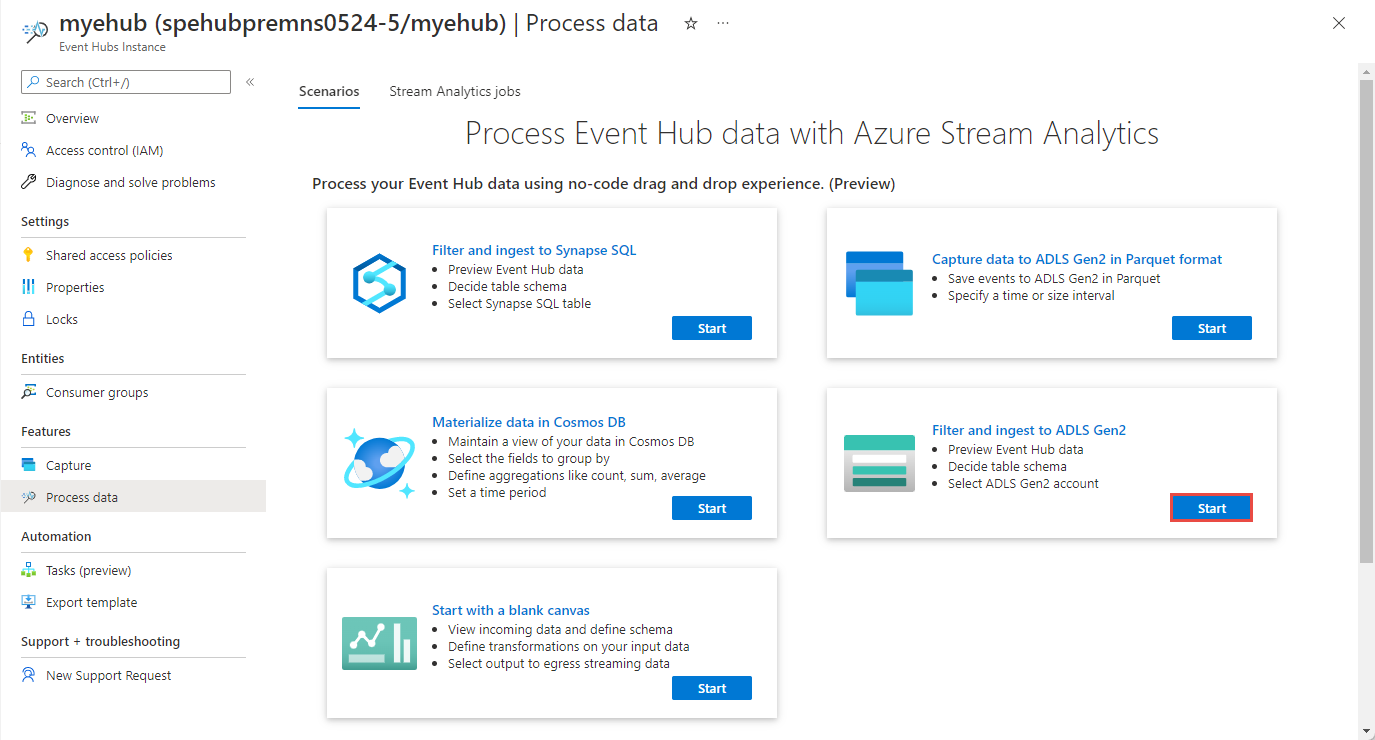
Enter a name for the Stream Analytics job, then select Create.
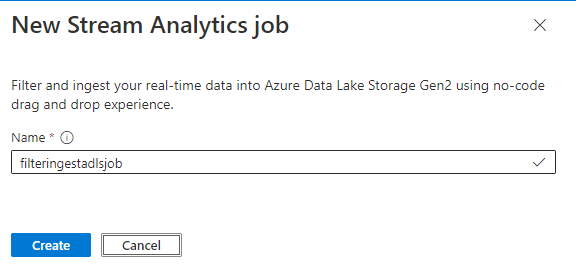
Specify the Serialization type of your data in the Event Hubs window and the Authentication method that the job will use to connect to the Event Hubs. Then select Connect.
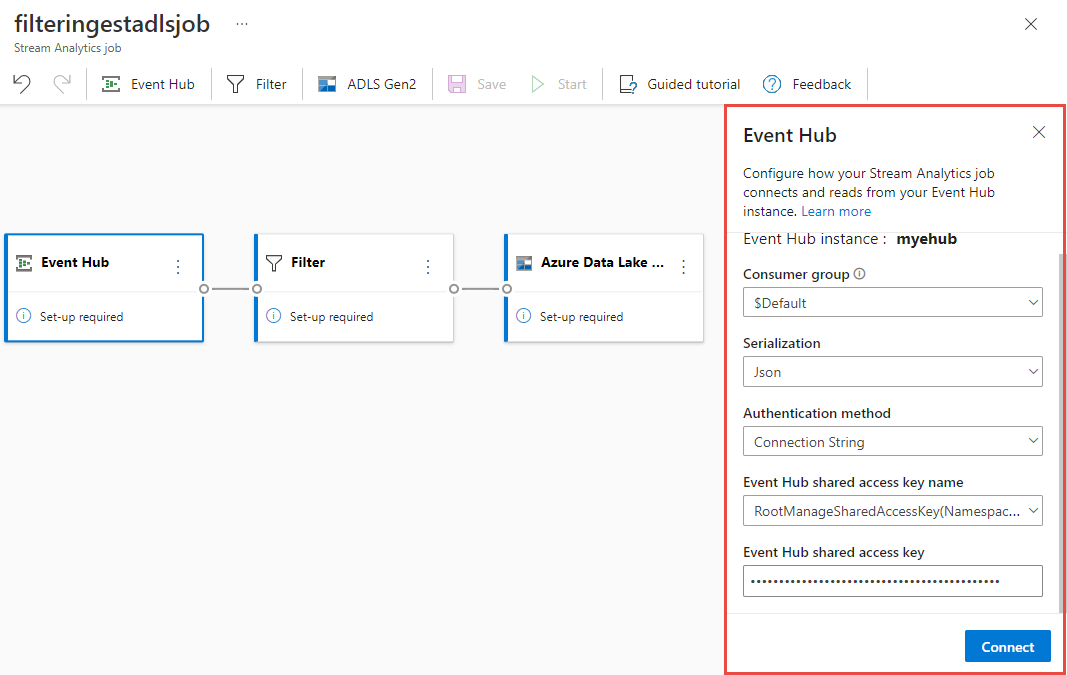
If the connection is established successfully and you have data streams flowing in to the Event Hubs instance, you'll immediately see two things:
- Fields that are present in the input data. You can choose Add field or select the three dot symbol next to each field to remove, rename, or change its type.
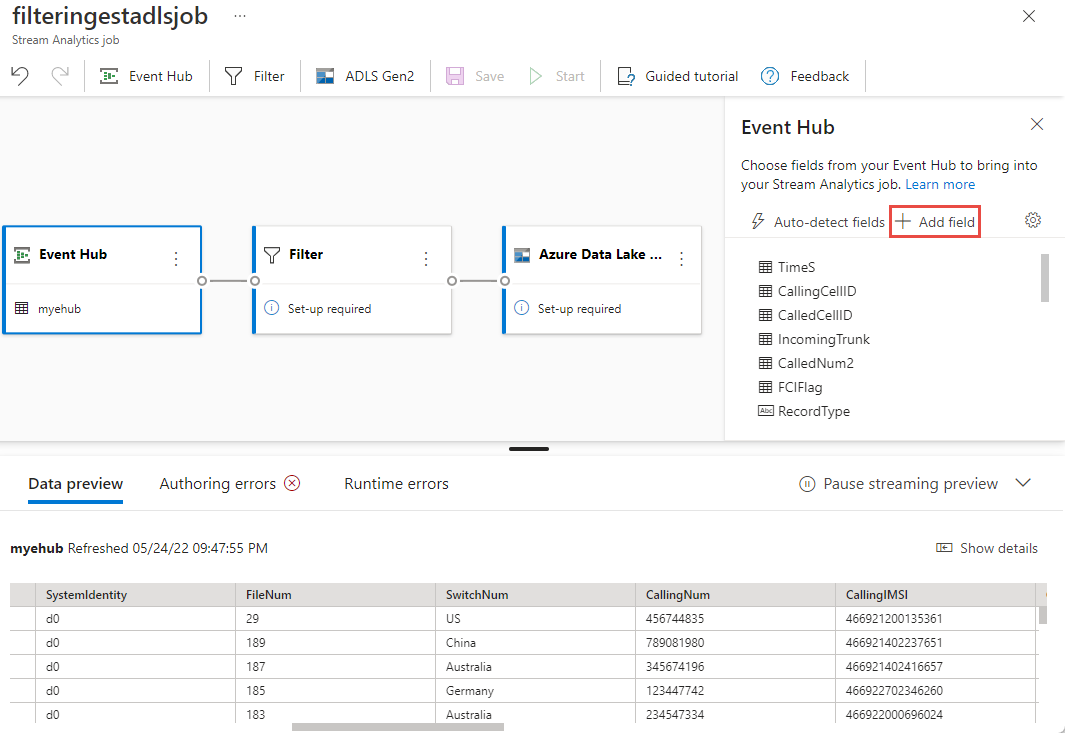
- A live sample of incoming data in Data preview table under the diagram view. It automatically refreshes periodically. You can select Pause streaming preview to see a static view of sample input data.

- Fields that are present in the input data. You can choose Add field or select the three dot symbol next to each field to remove, rename, or change its type.
Select the Filter tile. In the Filter area, select a field to filter the incoming data with a condition.
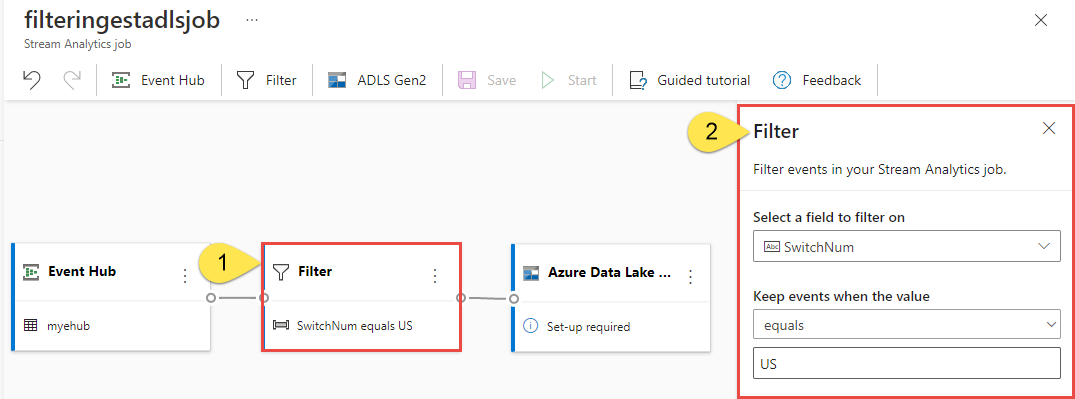
Select the Azure Data Lake Storage Gen2 tile. Select the Azure Data Lake Gen2 account to send your filtered data:
- Select the subscription, storage account name, and container from the drop-down menu.
- After the subscription is selected, the authentication method and storage account key should be automatically filled in. Select Connect.
For more information about the fields and to see examples of path pattern, see Blob storage and Azure Data Lake Gen2 output from Azure Stream Analytics.
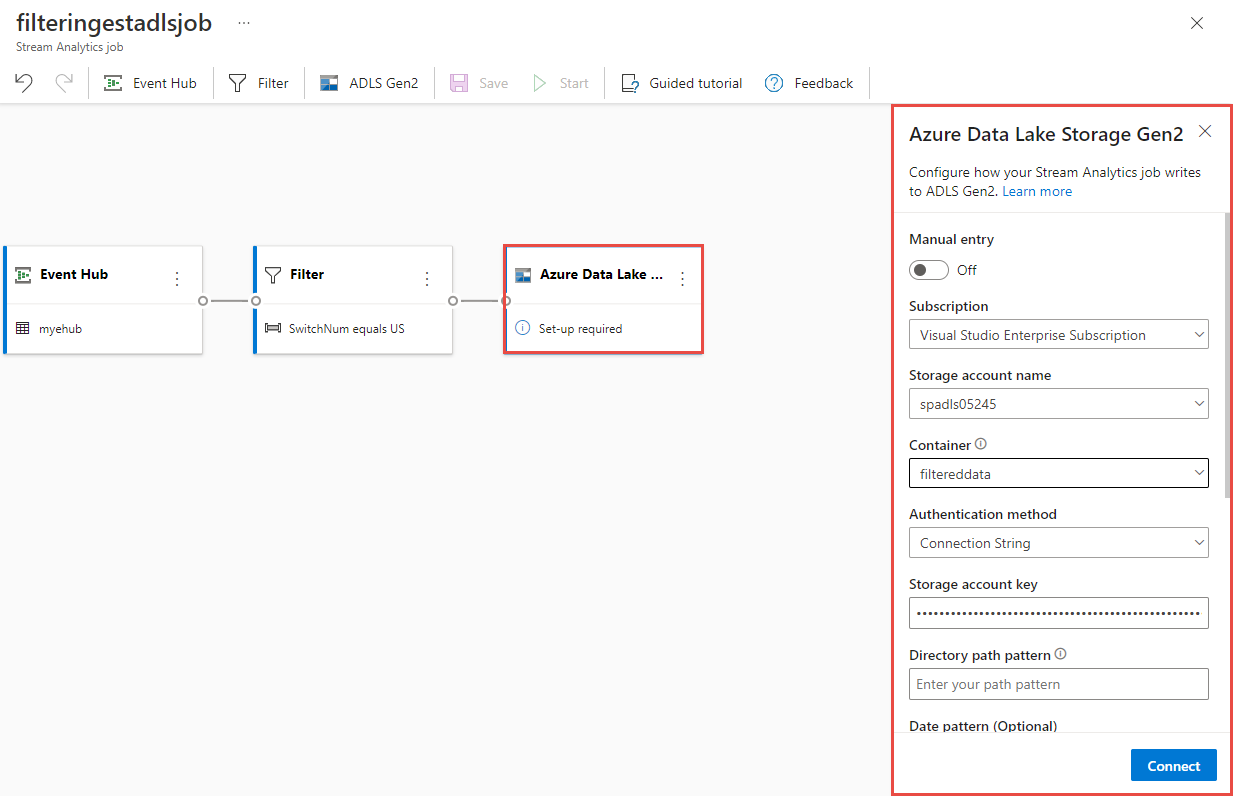
Optionally, select Get static preview/Refresh static preview to see the data preview that will be ingested from Azure Data Lake Storage Gen2.

To start the job, specify the number of Streaming Units (SUs) that the job runs with. SUs represents the amount of compute and memory allocated to the job. We recommended that you start with three and then adjust as needed.
After you select Start, the job starts running within two minutes and the metrics will be open in tab section below.
You can see the job under the Process Data section in the Stream Analytics jobs tab. Select Refresh until you see the job status as Running. Select Open metrics to monitor it or stop and restart it, as needed.
Here's a sample Metrics page:
Verify data in Data Lake Storage
You should see files created in the container you specified.
Download and open the file to confirm that you see only the filtered data. In the following example, you see data with SwitchNum set to US.
{"RecordType":"MO","SystemIdentity":"d0","FileNum":"548","SwitchNum":"US","CallingNum":"345697969","CallingIMSI":"466921402416657","CalledNum":"012332886","CalledIMSI":"466923101048691","DateS":"20220524","TimeType":0,"CallPeriod":0,"ServiceType":"S","Transfer":0,"OutgoingTrunk":"419","MSRN":"1416960750071","callrecTime":"2022-05-25T02:07:10Z","EventProcessedUtcTime":"2022-05-25T02:07:50.5478116Z","PartitionId":0,"EventEnqueuedUtcTime":"2022-05-25T02:07:09.5140000Z", "TimeS":null,"CallingCellID":null,"CalledCellID":null,"IncomingTrunk":null,"CalledNum2":null,"FCIFlag":null} {"RecordType":"MO","SystemIdentity":"d0","FileNum":"552","SwitchNum":"US","CallingNum":"012351287","CallingIMSI":"262021390056324","CalledNum":"012301973","CalledIMSI":"466922202613463","DateS":"20220524","TimeType":3,"CallPeriod":0,"ServiceType":"V","Transfer":0,"OutgoingTrunk":"442","MSRN":"886932428242","callrecTime":"2022-05-25T02:07:13Z","EventProcessedUtcTime":"2022-05-25T02:07:50.5478116Z","PartitionId":0,"EventEnqueuedUtcTime":"2022-05-25T02:07:12.7350000Z", "TimeS":null,"CallingCellID":null,"CalledCellID":null,"IncomingTrunk":null,"CalledNum2":null,"FCIFlag":null} {"RecordType":"MO","SystemIdentity":"d0","FileNum":"559","SwitchNum":"US","CallingNum":"456757102","CallingIMSI":"466920401237309","CalledNum":"345617823","CalledIMSI":"466923000886460","DateS":"20220524","TimeType":1,"CallPeriod":696,"ServiceType":"V","Transfer":1,"OutgoingTrunk":"419","MSRN":"886932429155","callrecTime":"2022-05-25T02:07:22Z","EventProcessedUtcTime":"2022-05-25T02:07:50.5478116Z","PartitionId":0,"EventEnqueuedUtcTime":"2022-05-25T02:07:21.9190000Z", "TimeS":null,"CallingCellID":null,"CalledCellID":null,"IncomingTrunk":null,"CalledNum2":null,"FCIFlag":null}
Next steps
Learn more about Azure Stream Analytics and how to monitor the job you've created.
Feedback
Coming soon: Throughout 2024 we will be phasing out GitHub Issues as the feedback mechanism for content and replacing it with a new feedback system. For more information see: https://aka.ms/ContentUserFeedback.
Submit and view feedback for
